博文
技术交流:度同位素比值测量TIMS & MC-ICP-MS 和微区分析 LA-MC-ICP-MS & SIMS对比
||
作者注:时光荏苒,科技前沿不断拓展。为助力地球化学科技工作者更好地应对实验技术的挑战,“元素和同位素地球化学”科学公众号联合“中国科学院西北生态环境资源研究院所级公共技术中心"推出系列实验技术文章。这一系列文章将深入解析实验技术的创新应用、方法优化以及实验技术在科学研究中的关键作用。文章将分享一手经验,探讨各类仪器设备的使用技巧,并提供解决实验中常见问题的实用建议。无论您是科研新秀还是资深专家,相信这些文章将为您的科研之路注入新的活力。敬请关注系列实验技术文章,一同探讨科技创新的无限可能!
Author's Note: As time marches on and the frontiers of science and technology constantly expand, "Elemental and Isotope Geochemistry," the scientific WeChat official account, with the "Institute-level Public Technical Center" of the Northwest Institute of Eco-Environment and Resources, Chinese Academy of Sciences, launches a series of articles on experimental techniques. This series delves deeply into the innovative applications, method optimizations, and pivotal roles of experimental techniques in scientific research. The articles will share firsthand experiences, discuss practical skills for using a variety of instruments and equipment, and offer pragmatic advice for resolving common issues encountered during experiments. Whether you are a burgeoning young researcher or an experienced expert, these articles are poised to infuse fresh vigor into your scientific journey. Stay tuned for this series of articles on experimental techniques and join us in exploring the boundless possibilities of scientific innovation!

高精度同位素比值测量TIMS & MC-ICP-MS和微区同位素分析LA-MC-ICP-MS & SIMS对比(附表)
在地质样品分析中,高精度同位素比值测定和微区元素分析是理解地球物质循环、地质事件时代学和地壳演化过程的关键技术手段。两种不同的同位素质谱分析技术,即热电离质谱(Thermal Ionization Mass Spectrometry, TIMS)和多接收电感耦合等离子体质谱(Multiple Collector Inductively Coupled Plasma Mass Spectrometry, MC-ICP-MS),以及与之联用的微区分析技术,如激光剥蚀(LA)与MC-ICP-MS形成的LA-MC-ICP-MS系统和二次离子质谱(Secondary Ion Mass Spectrometry, SIMS)或离子探针(Ion Probe),在地质样品分析中各自占据独特的地位,并展现出不同的优势和应用范围。
TIMS以其卓越的灵敏度和精密度在地质年代学中备受推崇,尤其在放射性同位素体系(如U-Pb、Rb-Sr、Sm-Nd等)的测定上具有无可替代的地位。然而,MC-ICP-MS凭借其广泛的元素覆盖范围、高速高效的分析能力和对稳定同位素比值的高精度测定,在地质流体、地球化学示踪和大规模地球化学勘探等领域展现出了巨大的潜力。在微区分析层面,LA-MC-ICP-MS通过将激光剥蚀技术与MC-ICP-MS相结合,实现了对地质样品局部区域(微米至几十微米级别)元素和同位素分布的高精度分析,这对于探究岩石、矿物内的微观地球化学过程具有重要意义。相反,二次离子质谱(SIMS)则以纳米级别的超高空间分辨率闻名,尤其在深部矿物晶格、矿物界面处的微量元素和同位素异常分析中具有突出优势。
在地质分析这一精密科学领域,对地质样品中的微量元素、同位素组成及其时空分布的精确测定至关重要,这不仅有助于揭示地球物质的形成与演化历程,而且能为资源勘查、环境评价以及地质灾害预警提供关键依据。TIMS、MC-ICP-MS、LA-MC-ICP-MS以及SIMS这四种技术,作为现代地质分析的核心手段,各自在特定应用场景中展现出了显著的性能优势与适用性差异。
In geological sample analysis, high-precision measurements of isotope ratios and micro-scale elemental analysis are crucial technical approaches for understanding Earth's material cycles, chronostratigraphy of geological events, and crustal evolution processes. Two distinct types of isotope mass spectrometry analysis techniques, Thermal Ionization Mass Spectrometry (TIMS) and Multiple Collector Inductively Coupled Plasma Mass Spectrometry (MC-ICP-MS), along with their associated micro-scale analytical technologies such as Laser Ablation combined with MC-ICP-MS forming the LA-MC-ICP-MS system and Secondary Ion Mass Spectrometry (SIMS) or Ion Probe, occupy unique positions in geological sample analysis and demonstrate varying strengths and application scopes.
TIMS is highly esteemed in geological chronology due to its exceptional sensitivity and precision, especially in the measurement of radioactive isotope systems like U-Pb, Rb-Sr, Sm-Nd, where it holds an irreplaceable position. Conversely, MC-ICP-MS demonstrates enormous potential in fields such as geological fluid analysis, geochemical tracing, and large-scale geochemical exploration, thanks to its broad elemental coverage, rapid and efficient analytical capability, and high-precision determination of stable isotope ratios.
At the micro-scale level, LA-MC-ICP-MS integrates laser ablation technology with MC-ICP-MS, enabling high-precision analysis of elemental and isotope distributions within local regions (on the scale of micrometers to tens of micrometers) of geological samples, which is of significant importance for investigating microscale geochemical processes within rocks and minerals. On the other hand, SIMS is renowned for its ultra-high spatial resolution at the nanometer level, demonstrating outstanding advantages in the analysis of trace element and isotope anomalies at deep mineral lattice sites and mineral interfaces.
In the precise science of geological analysis, accurate determinations of trace elements, isotope compositions, and their spatial-temporal distribution in geological samples are vital. These not only contribute to revealing the formation and evolution history of Earth materials but also provide key evidence for resource exploration, environmental evaluation, and geological disaster forecasting. Among these, TIMS, MC-ICP-MS, LA-MC-ICP-MS, and SIMS, serve as core techniques in modern geological analysis, each showcasing remarkable performance advantages and applicability differences in specific application scenarios, as summarized in the accompanying table.
表1. TIMS和MC-ICP-MS对比
| 指标 | 热电离质谱(TIMS) | 多接收等离子体质谱(MC-ICP-MS) |
|---|---|---|
| 工作原理 | 通过加热样品,使同位素离子化并加速,然后通过磁场和电场进行质量分析。 | 利用电感耦合等离子体(ICP)电离样品,通过磁场进行质量分析 |
| 样品准备 | 精细的化学纯化步骤,这是因为TIMS对样品纯度要求极高,任何杂质都可能导致记忆效应或基质效应。样品涂敷在金属带上,需特殊前处理 | 消解过程可能使用强酸(如硝酸、氢氟酸、高氯酸)或混合酸体系,目标是将所有待测元素完全转化为溶液状态 |
| 分析元素 | 如铀系定年、铅同位素分析和放射性同位素测量 | 可分析大部分元素,包括轻、重元素及非传统稳定同位素 |
| 空间分辨率 | 通常不具备微区分析能力 | 通过激光剥蚀可实现微区分析 |
| 灵敏度 | 其极高的灵敏度和精确度,尤其是在处理微量样品时,即使样品中待测元素浓度很低也能获得高质量的数据 | 整体灵敏度较高,但不如TIMS在某些特定同位素上的灵敏度,精度略低于TIMS,但仍然非常高 |
| 精密度 | 非常高,尤其适用于放射性同位素测年 | 高,适合稳定同位素比值测定,但对放射性同位素测年精密度可能略逊于TIMS |
| 分析速度 | 相对较慢,适合少量样品精确分析 | 快速,适合大量样品的快速筛查和分析 |
| 应用领域 | 主要用于地质学、环境科学和核科学研究年代学(如U-Pb、Rb-Sr、Sm-Nd等)、地球化学示踪 | 应用更广泛,包括地球科学、环境科学、生物学、医学和材料科学、地质年代学、同位素地球化学等 |
| 样品消耗 | 样品量相对较少但仍需一定量 | 样品消耗量较小,可进行微量分析 |
| 干扰校正 | 可能需要复杂的校正程序 | 源中干扰较多,但现代仪器配备有复杂的干扰校正技术 |
总结:TIMS基于热电离原理,通过加热样品使其离子化,主要针对地质、环境、生物等领域中的长寿命放射性同位素和某些稳定同位素进行精确测量,尤其是铀-铅定年、钐-钕同位素体系等。样品需经过严格的前处理转化为离子状态,并涂覆在石墨或金属靶片上进行分析,其特点是灵敏度高、准确度优异,但样品准备过程复杂,分析速度相对较慢。MC-ICP-MS则是结合电感耦合等离子体高效离子化技术和多接收器高精度检测技术,适用于痕量至超痕量元素的同位素比值分析,尤其是在环境科学、地球化学、地质年代学等领域。样品通常以溶液形式直接进样,无需转化为固体靶材,因此样品前处理相对简便,且能实现高通量、快速分析。然而,MC-ICP-MS在极低浓度样品分析或某些复杂基体样品的处理上,可能面临基体干扰问题,对此需要采取一定的样品净化措施。
TIMS (Thermal Ionization Mass Spectrometry) and MC-ICP-MS (Multiple Collector Inductively Coupled Plasma Mass Spectrometry):
| Parameter | Thermal Ionization Mass Spectrometry (TIMS) | Multiple Collector Inductively Coupled Plasma Mass Spectrometry (MC-ICP-MS) |
|---|---|---|
| Principle | Heating samples to ionize elements, typically using a filament or resistive film | Ionization of elements by a high-temperature plasma generated by an inductively coupled plasma torch |
| Main Application | Precise radiometric dating (e.g., U-Pb, Rb-Sr, Sm-Nd) and high-precision stable isotope analysis | Rapid and high-throughput stable isotope ratio analysis, particularly for trace elements |
| Spatial Resolution | Limited, generally not suitable for micro-sampling | Can be coupled with LA (Laser Ablation) for micro-spatial analysis (LA-MC-ICP-MS) |
| Elemental Range | Limited to specific elements that form volatile oxides or chlorides | Wider range, applicable to a larger number of elements |
| Sensitivity | Exceptionally high for certain elements due to longer counting times | Good sensitivity for trace elements, though generally lower than TIMS |
| Analysis Time | Longer, typically suited for fewer samples with high precision demands | Shorter, allowing for high sample throughput and rapid results |
| Matrix Effects | More pronounced due to direct sample loading | Less sensitive to matrix effects but still influenced by them |
| Sample Preparation | Requires chemical separation and loading onto filaments or targets | Generally less complex, can handle solutions and solids directly |
| Typical Precision | Outstanding for long-lived radioactive isotopes and select stable isotopes | Excellent for many stable isotopes, though depends on instrument configuration |
| Cost Per Analysis | Higher due to specialized consumables and longer run times | Lower for routine analyses, but initial instrument cost can be higher |
| Sample Consumption | Relatively high, particularly for isotopic dating methods | Low, suited for small samples or precious materials |
Note: This table summarizes general information, and specific details might vary depending on the instrument model, configuration, and the laboratory setup.
Summary: TIMS is based on the thermoelectric ionization principle and ionizes the sample by heating it, mainly for the accurate measurement of long-lived radioisotopes and some stable isotopes in geology, environment, biology and other fields, especially uranium-lead dating, samarium-neodymium isotope system. The sample needs to be converted into an ionic state after rigorous pre-treatment and coated on a graphite or metal target for analysis, which is characterized by high sensitivity and excellent accuracy, but the sample preparation process is complex and the analysis speed is relatively slow. MC-ICP-MS is a combination of inductively coupled plasma high-efficiency ionization technology and multi-receiver high-precision detection technology, which is suitable for isotopic ratio analysis of trace to ultra-trace elements, especially in environmental science, geochemistry, geochronology and other fields. Samples are usually injected directly in solution without the need for conversion to a solid target, so sample preparation is relatively simple and allows for high throughput and rapid analysis. However, MC-ICP-MS may face the problem of matrix interference in the analysis of very low concentration samples or the treatment of some complex matrix samples, which requires some sample purification measures.
表2. 微区同位素分析LA-MC-ICP-MS与SIMS对比
| 指标 | 激光微区-多接收等离子体(LA-MC-ICP-MS) | 二次离子质谱(SIMS) |
|---|---|---|
| 原理 | 激光剥蚀样品转化为气溶胶,通过ICP电离后进行质谱分析 | 利用初级离子束轰击样品表面产生二次离子进行质谱分析 |
| 分辨率 | 微米级别,通过优化激光直径可提高至数十微米 | 纳米级别至几十纳米,具有极高的空间分辨率 |
| 检测范围 | 宽,可涵盖大部分元素,尤其是稀土和重金属元素 | 较宽,但针对特定元素和同位素有极高灵敏度 |
| 同位素分析 | 适用于稳定同位素比值分析,如Sr-Nd-Pb-Hf等 | 适用于稳定和放射性同位素,尤其在极痕量分析上表现出色 |
| 灵敏度 | 适用于痕量至常量元素分析,稳定同位素比值分析灵敏度高 | 对部分元素具有极高灵敏度,可用于超痕量分析 |
| 深度剖 析 | 不适用,无法进行逐层深度剖析 | 可以进行深度剖析,逐层分析样品不同深度 |
| 分析速度 | 较快,适合连续扫描或批量微区分析 | 较慢,每个微区点分析耗时较长 |
| 样品类型 | 适用于大部分地质样品,包括矿物、岩石等 | 适用于各类固体样品,包括半导体、薄膜等 |
| 应用领域 | 地质年代学、地球化学示踪、矿床成因等 | 微电子学、材料科学、地质学中的微区精细分析 |
总结:LA-MC-ICP-MS技术通过激光剥蚀样品表面产生气溶胶,随后导入电感耦合等离子体质谱进行同位素比值测定。这种方法具有很高的空间分辨率(几十到几百微米级别),特别适合地质样品中的微区同位素分布研究,如锆石U-Pb年龄测定、硫化物微量元素和硫同位素分析、硼同位素等。其优点在于灵敏度高、多元素同时分析能力强,而且能提供较宽的动态范围。缺点可能包括对样品表面平整度有一定要求,激光剥蚀过程可能引入的空间分异效应,以及对部分轻元素分析可能存在局限。相比之下,SIMS技术通过聚焦离子束轰击样品表面,激发次级离子进行质谱分析,空间分辨率更高,可达纳米级别,适用于更微观层次的研究,如半导体材料、矿物晶格结构内的同位素异常探测、生物样品中的同位素标记等。
SIMS的优点是分辨率极高,对极小区域内的同位素分布有卓越解析能力。但其缺点包括可能存在的基质效应较大,对重同位素分析灵敏度较低,且由于离子束直径较小,大面积分析效率相对较低。综合来说,LA-MC-ICP-MS在地质样品宏观至微观尺度的同位素分析上更具优势,而SIMS更适合超微区、超高精度的同位素成像和深度剖面分析。在实际应用中,二者往往根据研究需求和样品特性选择适宜的分析技术。需要注意的是,以上比较是基于一般情况下的性能特点,并不代表所有设备都能完全符合上述描述,具体性能可能会因仪器型号、配置以及实验条件的不同而有所差异。在实际应用中,科研工作者会根据研究目标和样品特性来选择最适合的分析技术。
LA-MC-ICP-MS and SIMS
| Technique | LA-MC-ICP-MS (Laser Ablation - Multi Collector Inductively Coupled Plasma Mass Spectrometry) | SIMS (Secondary Ion Mass Spectrometry) |
|---|---|---|
| Principle | Laser ablation generates aerosol from the sample, which is ionized in an ICP plasma and analyzed for isotopes. | Focused ion beam bombards the sample surface, generating secondary ions that are directly analyzed for isotopes. |
| Spatial Resolution | High, ranging from tens to hundreds of microns (typically ~10-160 μm). | Ultra-high, reaching down to the nanometer scale (typically sub-100 nm to several hundred nm). |
| Suitability | Ideal for geological samples, especially for studies requiring macro-to-microscale isotope distribution, e.g., U-Pb dating in zircons, trace element & sulfur isotope analysis in sulfides, etc. | Optimal for very small-scale, high-precision isotope mapping, e.g., in semiconductors, minerals, and biological samples for isotopic anomalies or labels. |
| Advantages | - Wide dynamic range;- Simultaneous multi-element analysis- High sensitivity for many elements- Non-destructive (with proper settings) | - Exceptionally high spatial resolution; No sample dissolution required;- Can analyze surfaces and subsurface layers;- Suitable for layered and complex matrices |
| Disadvantages | - Sample surface homogeneity may be critical; Laser-induced spatial heterogeneities may occur; Limited for some light elements | - Matrix effects can be significant; Lower sensitivity for heavier isotopes compared to LA-MC-ICP-MS;- Slower for large area scans due to small beam size |
| Applications | - Geochronology; Ore deposit studies; Environmental and archaeological sciences; Petrology and geochemistry | - Material science; Semiconductor industry; Nanostructures;- Biology and medicine |
| Sample Preparation | Relatively less demanding, but may require polishing for flat surfaces. | May involve more specialized preparation, like coating with conductive layer for non-conductive samples. |
| Cost and Speed | Generally faster for bulk analysis and less expensive per analysis than SIMS. | More time-consuming and expensive for high-resolution imaging but provides unparalleled spatial detail. |
Please note that these descriptions are generalizations and the specific capabilities, limitations, and costs associated with each technique can vary depending on the instrument type, configuration, and laboratory setup.
Summary: LA-MC-ICP-MS technology involves ablating the sample surface with a laser to produce an aerosol, which is then introduced into an inductively coupled plasma mass spectrometer for isotope ratio measurements. This approach offers high spatial resolution (in the order of tens to hundreds of micrometers), making it particularly suitable for studying micro-regional isotope distributions in geological samples, such as zircon U-Pb age determinations, trace element and sulfur isotope analyses of sulfides, and boron isotope analyses. Its advantages include high sensitivity, strong simultaneous multi-element analysis capability, and a wide dynamic range. Potential drawbacks include requirements for sample surface flatness, possible spatial differentiation effects introduced during laser ablation, and limitations in the analysis of some light elements.
In contrast, SIMS technology utilizes a focused ion beam to bombard the sample surface, exciting secondary ions for mass spectrometric analysis, achieving an even higher spatial resolution down to the nanometer level, which is suitable for research at more microscopic levels, such as detecting isotope anomalies in semiconductor materials, mineral lattice structures, and isotopic labeling in biological samples.
SIMS' advantage lies in its extremely high resolution, offering superior解析 ability for isotope distributions in minute regions. However, its disadvantages include potentially significant matrix effects, lower sensitivity for heavy isotope analyses, and relatively lower efficiency in analyzing large areas due to the smaller diameter of the ion beam. Overall, LA-MC-ICP-MS is more advantageous for isotope analyses across macro-to-microscopic scales in geological samples, while SIMS is better suited for ultra-microscale, high-precision isotope imaging and depth profiling.
In practical applications, both techniques are often selected based on research requirements and sample characteristics. It is noteworthy that the above comparison is based on general performance characteristics and does not necessarily apply to every instrument; specific performances can vary depending on factors such as the model, configuration, and experimental conditions of the equipment. In actual practice, researchers choose the most appropriate analytical technique based on their research objectives and sample properties.
参考文献:
Weis, D., Kieffer, B., Maerschalk, C., Barling, J., De Jong, J., Williams, G. A., ... & Mahoney, J. B. (2006). High‐precision isotopic characterization of USGS reference materials by TIMS and MC‐ICP‐MS. Geochemistry, Geophysics, Geosystems, 7(8).
Balaram, V., Rahaman, W., & Roy, P. (2022). Recent advances in MC-ICP-MS applications in Earth and environmental sciences: Challenges and solutions. Geosystems and Geoenvironment, 1(2), 100019.

中国科学院西北生态环境资源研究院油气资源研究中心同位素地球化学技术平台,作为国内该领域核心科研设施之一,继承和发展了原中国科学院兰州地质研究所气体地球化学国家重点实验室稳定同位素地球化学实验室科研实力和技术积累。平台依托国际顶尖的同位素比质谱技术,为我国的油气地质学、地球化学等相关领域的研究提供了可靠的技术服务。自上世纪1970年代以来,实验室不断引进并升级了一系列高端同位素比质谱仪设备,这些设备涵盖了从国产研发的ZHT-1301同位素比质谱仪到国际上享有盛誉的MAT 271高精度气体质谱,还包括高精度稀有气体同位素比质谱,以及气体稳定同位素比质谱和电感耦合等离子体质谱等先进的同位素比质谱,从而构建了一个全方位、多维度的同位素地球化学研究体系,有力地推动了相关科研工作。
【平台专注方向】平台依托于中国科学院西北生态环境资源研究院深厚的学术底蕴和一流的科研条件,以稳定同位素比值分析为核心技术手段,致力于揭示地球系统各圈层中物质循环、能量流动以及生物地球化学过程的内在规律。平台关注不限于油气地球化学、地质学、环境科学、生态学等地球科学领域相关领域的科学研究与技术开发。在天然气、原油、烃源岩、水体、岩石、土壤及植物及生物体同位素地球化学过程方面具有技术优势,特别是在天然气碳、氢同位素测试、温泉气体同位素测试、原油及沉积物特定有机化合物同位素测试、地质样品微量和超微量气体同位素分析方面积累了丰厚的经验。此外,平台拥有完善的样品预处理系统,确保从样品采集、保存、预处理到测试分析的全流程质量控制。
通过测定各类地质体中同位素的组成特征来实现以下领域的研究:①油气地球化学:在石油天然气勘探开发中,气体同位素用于烃源对比、油源识别、成熟度评价、流体运移路径追踪等。②生态科学与环境科学:分析生态系统中温室气体排放、环境污染来源解析、生态系统碳循环与氮循环过程、环境污染源解析及环境影响评价地下水补给与循环机制;气候变化记录重建、冰川融水径流过程模拟等。③地球科学的基础研究:揭示地球内部动力学过程、板块构造演化、地壳物质循环、大气演化历史等。④成岩成矿研究:利用同位素定年技术确定岩石和矿床的形成年代,并通过同位素示踪研究成矿物质来源、成矿机制和成矿环境。⑤地震流体地球化学研究:在地震活动的研究中,通过测定地下水或火山气体中的氢、氧、碳、氦等稳定同位素以及放射性同位素,追踪地下流体的压力变化、温度变化和流体迁移速度,这些因素可能与地震孕育和发生过程密切相关。
The Isotope Geochemistry Technology Platform at the Northwest Institute of Eco-Environment and Resources, Chinese Academy of Sciences, as one of the core research facilities in this field domestically, has inherited and advanced the scientific research capabilities and technological accumulations from the former National Key Laboratory of Gas Geochemistry, Institute of Geology, Chinese Academy of Sciences. Leveraging the world-class isotope ratio mass spectrometry technology, the platform provides reliable technical services for studies in oil and gas geology, geochemistry, and related disciplines in China.
Since the 1970s, the laboratory has continuously introduced and upgraded a series of high-end isotope ratio mass spectrometers, ranging from domestically developed ZHT-1301 Isotope Ratio Mass Spectrometer to the internationally acclaimed MAT 271 High-Precision Gas Mass Spectrometer, as well as high-precision rare gas isotope ratio mass spectrometers, gas stable isotope ratio mass spectrometers, and inductively coupled plasma mass spectrometers, thereby establishing a comprehensive and multi-dimensional isotope geochemistry research system that significantly boosts related scientific research endeavors.
【Platform Focus】Based on the profound academic heritage and first-class research conditions of the Northwest Institute of Eco-Environment and Resources, CAS, the platform centers on stable isotope ratio analysis as its core technology, striving to reveal the inherent laws of material cycling, energy flow, and biogeochemical processes within Earth's various spheres. The platform's interests span across multiple fields including petroleum geochemistry, geology, environmental science, ecology, and other related areas in earth sciences. It boasts technical advantages in isotope geochemistry processes concerning natural gas, crude oil, source rocks, water bodies, rocks, soils, plants, and biological organisms, with extensive experience particularly in natural gas carbon and hydrogen isotopes testing, hot spring gas isotopes testing, specific organic compound isotopes testing in crude oils and sediments, and trace and ultra-trace gas isotope analysis in geological samples. Additionally, the platform possesses a complete sample preprocessing system to ensure quality control throughout the entire process from sample collection, preservation, preprocessing to testing and analysis.
Through measuring the isotopic composition characteristics in various geological bodies, the platform facilitates research in the following areas:
Petroleum Geochemistry: In oil and gas exploration and development, gas isotopes are used for hydrocarbon correlation, oil source identification, maturity assessment, fluid migration path tracking, etc.
Ecological Science and Environmental Science: Analyzing greenhouse gas emissions in ecosystems, deciphering sources of environmental pollution, elucidating processes of the carbon and nitrogen cycle in ecosystems, source apportionment of environmental pollution, and environmental impact assessments; groundwater recharge and circulation mechanisms, reconstruction of climate change records, simulation of glacial meltwater runoff processes, etc.
Basic Research in Earth Sciences: Uncovering internal dynamical processes of the Earth, plate tectonic evolution, crustal material cycling, and atmospheric evolution history.
Petrogenesis and Ore-Forming Studies: Utilizing isochronous dating techniques to determine the formation ages of rocks and mineral deposits and employing isotope tracing to investigate mineral sources, ore-forming mechanisms, and ore-forming environments.
Seismic Fluid Geochemistry Research: In the study of seismic activity, by measuring stable isotopes (such as hydrogen, oxygen, carbon, and helium) and radioactive isotopes in groundwater or volcanic gases, the platform tracks changes in fluid pressure, temperature, and migration rates, which could be closely related to the gestation and occurrence of earthquakes.
附图:同位素地球化学平台部分仪器
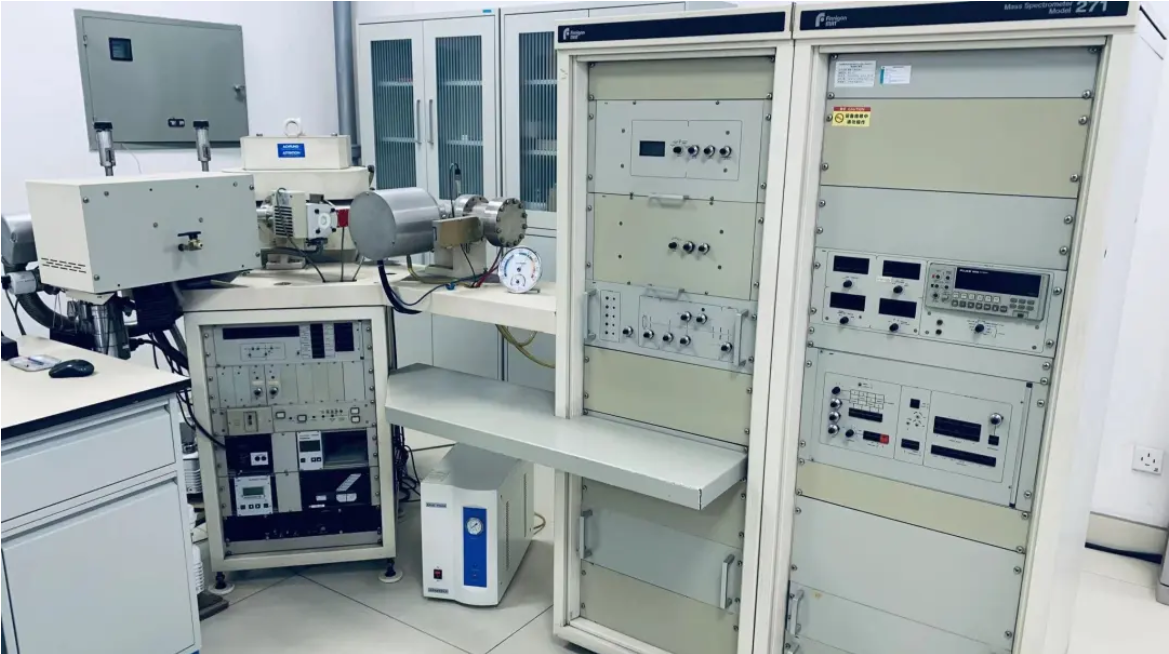
图1. MAT 271高精度气体成分质谱计MAT 271 High precision gas composition mass spectrometer
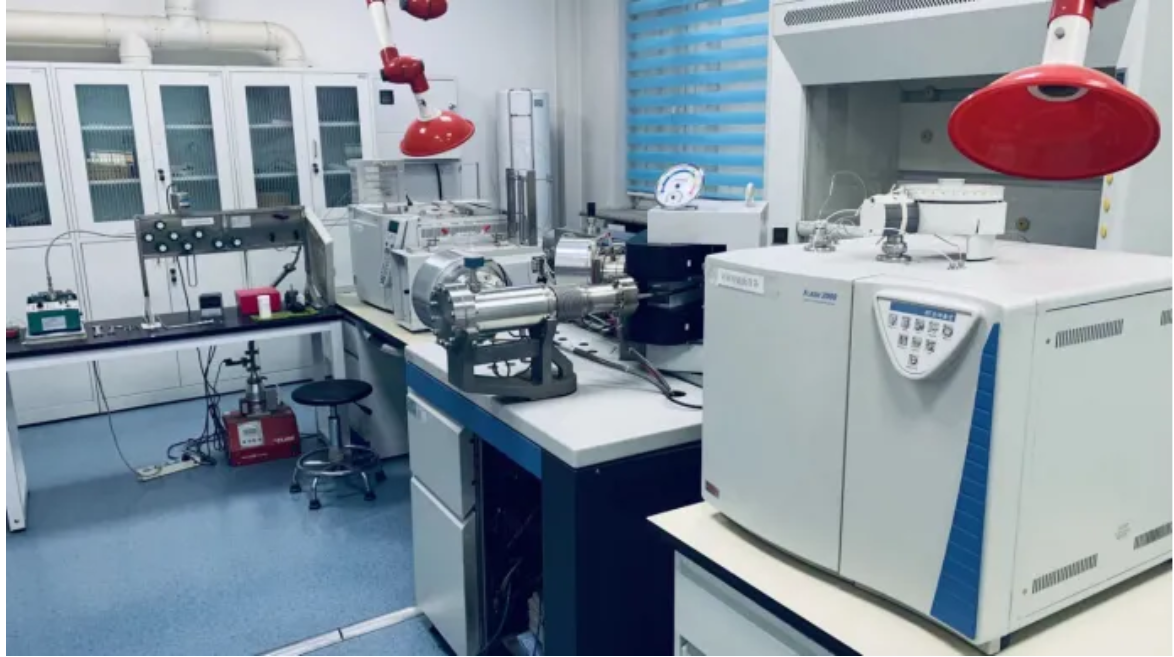
图2. 气相色谱/元素分析-同位素比质谱联用仪Gas chromatography/elemental analysis - isotope ratio mass spectrometry
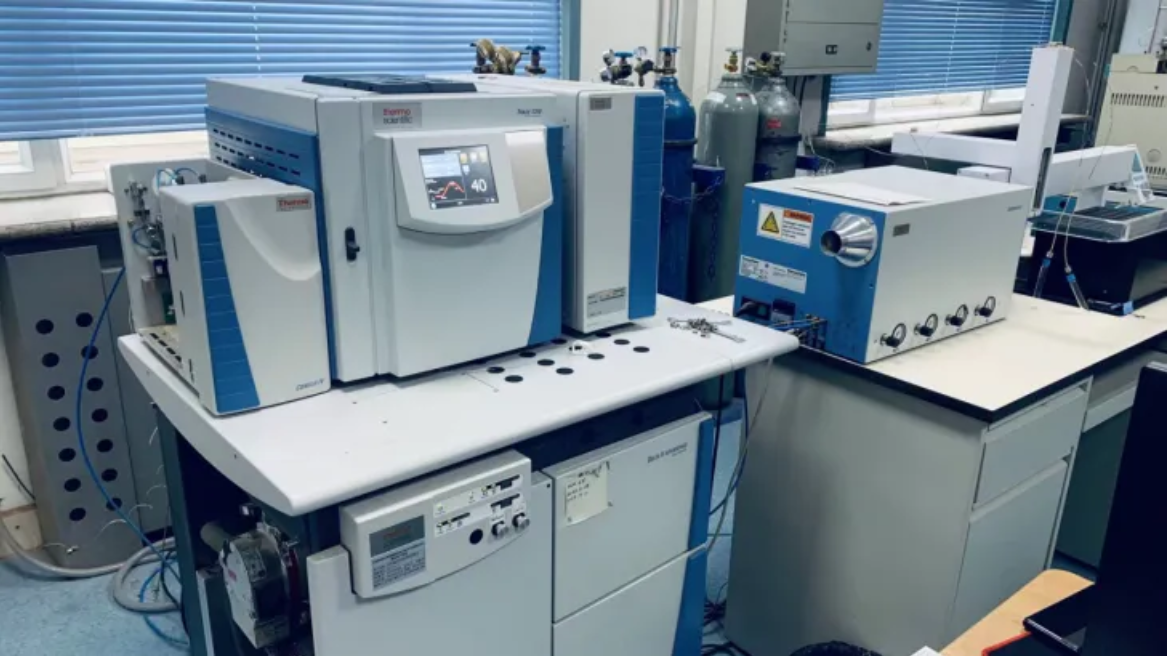
图3. 气相色谱-稳定同位素比质谱联用仪Gas chromatography-isotope ratio mass spectrometry
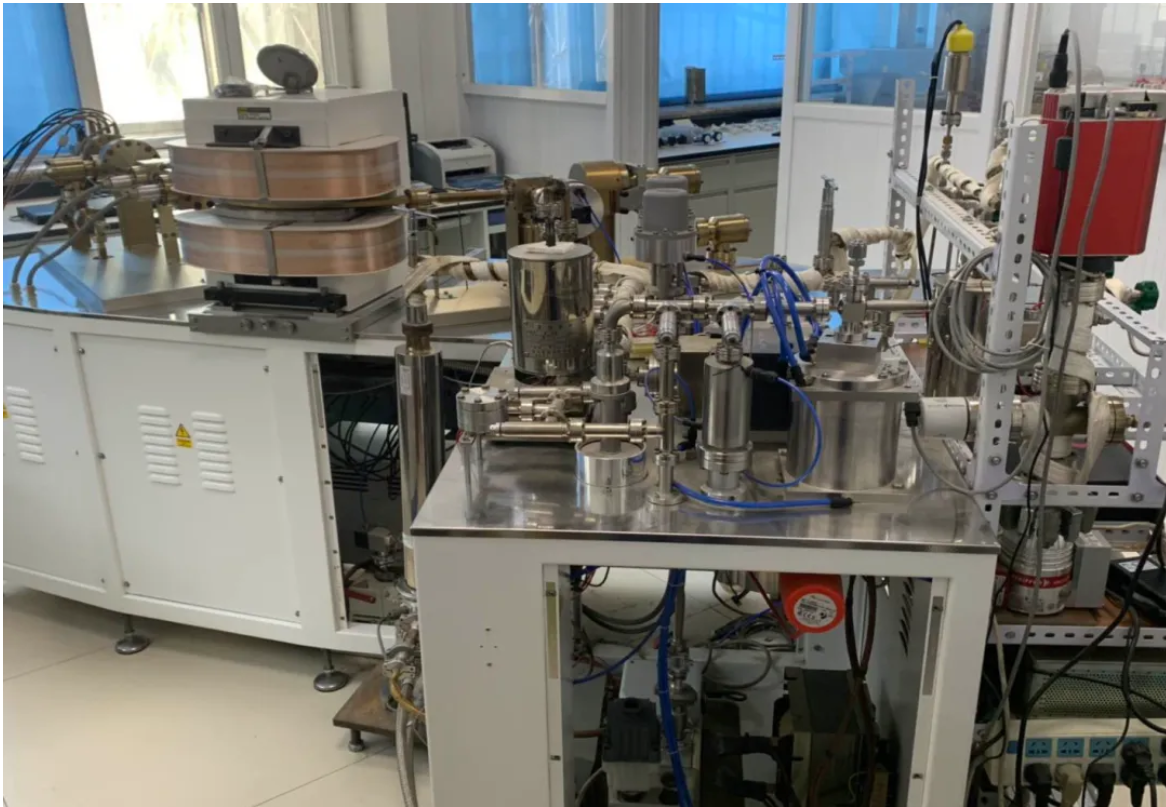
图4. 高精度稀有气体同位素比质谱High precision boble gas isotope ratio mass spectrometry

图5. 稀有气体样品前处理系统noble gas sample pretreatment system
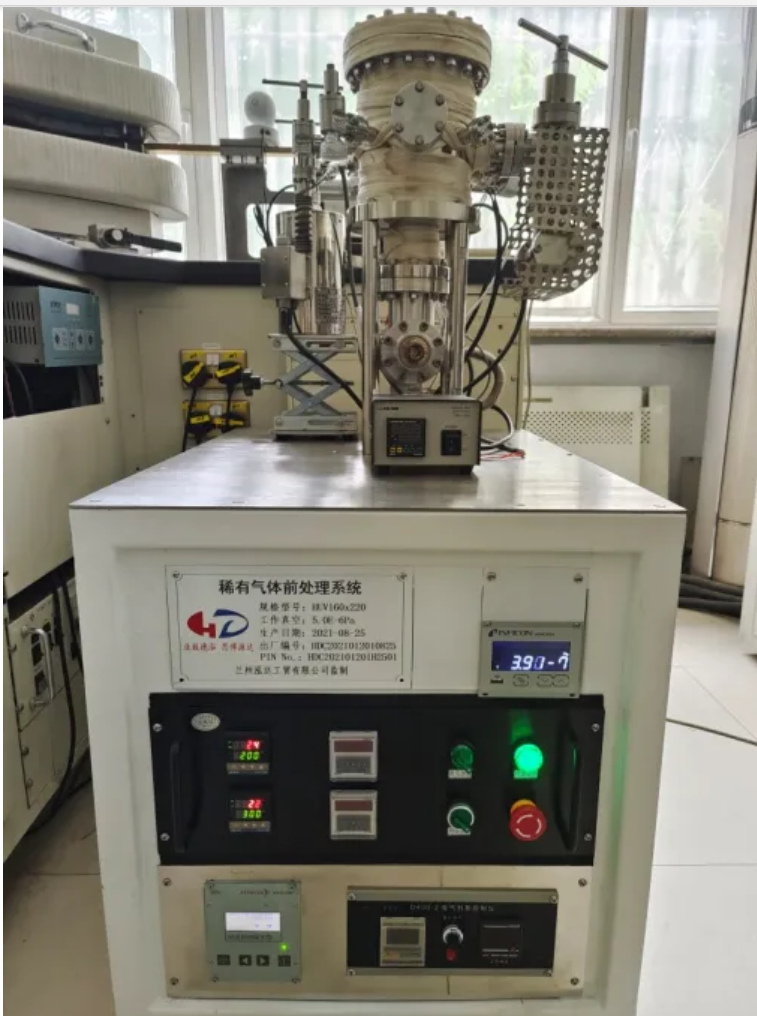
图6. 稀有气体样品前处理系统noble gas sample pretreatment system
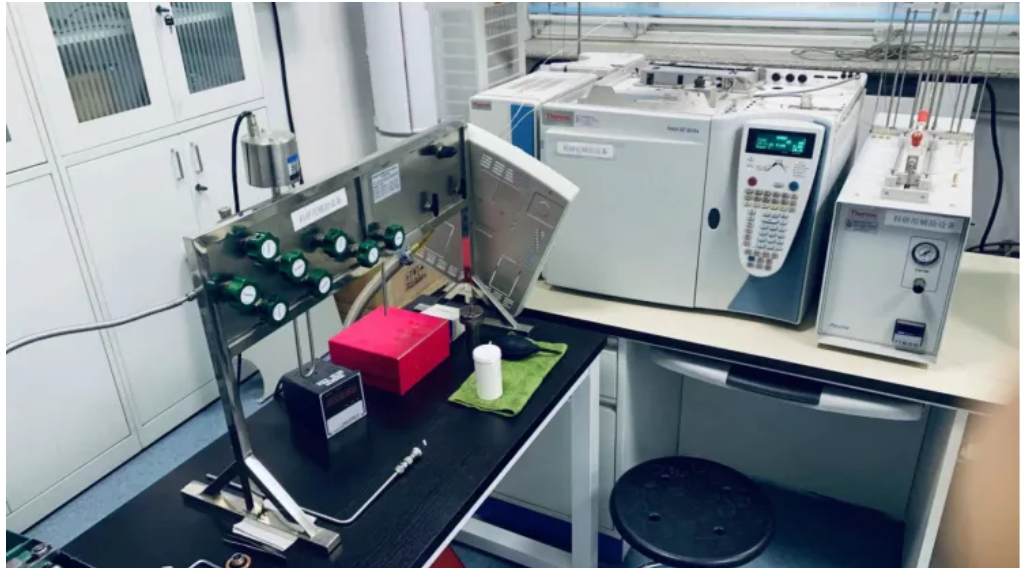
图7. 岩石样品微量气体提取系统Trace gas extraction system for rock samples
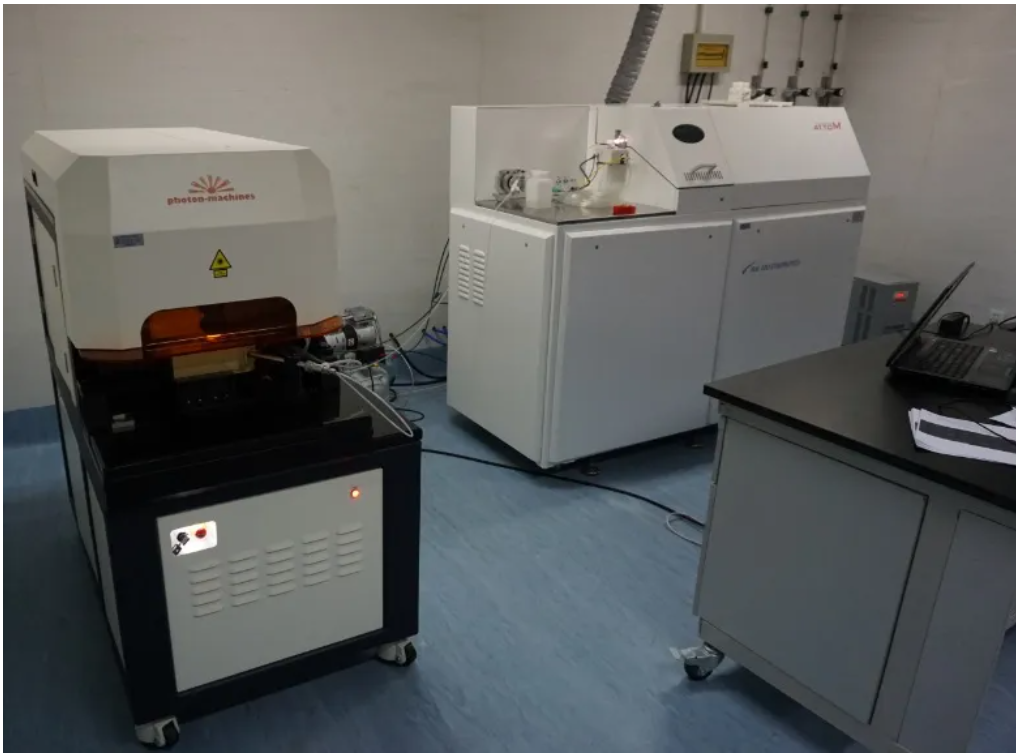
图 8.激光剥蚀—等离子质谱(LA-ICP-MS)

图9. 全面开放共享的科技平台,科研人员上机实验Comprehensive open and shared science and technology platform, researchers on the computer experiment

【平台合作交流】平台鼓励了跨学科交叉研究,进一步拓宽了科技创新的广度和深度。实验室与国内近百家科研及生产单位建立了长期的合作关系,共同承担重大科研项目,并在能源、环境、地球科学等多个领域开展构建了一个广泛的协作网络。平台通过整合资源,共享先进技术,不仅加强了不同实验室之间的技术交流与合作,还有效地提升了整体科研效率和创新能力,使得科研成果能够迅速转化,促进技术的迭代更新。 自2017年以来,平台发起并承办了第一、第二届“全国气体同位素技术与地球科学应用研讨会”,来自包括美国、英国、日本等多家实验室以及国内近200家单位代表参加了会议。2020年9月,平台承担了国内首次同位素实验室间对比项目。平台也是“中国矿物岩石地球化学学会气体地球化学专业委员会”专业支撑平台。通过组织研讨会、培训活动和技术服务等方式,不断提升整个行业的技术人才储备和创新能力。为推动了同位素分析技术在国内的标准化和规范化进程,提高了整体技术水平和服务能力。这些服务和研究成果广泛应用于油气及地质矿产勘探、环境科学、农业、生态学等领域。同位素地球化学技术平台注重理论与实践操作相结合,为科研人员提供优质的科研训练平台,培养了一批批具有扎实理论基础和实际操作能力的专业人才,服务于国家重大战略需求和地方经济社会发展。未来,稳定同位素地球化学技术平台将继续秉承“严谨求实、开拓创新”的科研精神,紧跟国际前沿科技发展趋势,深化跨学科交叉合作,打造成为国际具有重要影响力的同位素地球化学科研基地。
【Platform Collaboration and Exchange】The platform has actively encouraged interdisciplinary research, significantly broadening the scope and depth of scientific and technological innovation. The laboratory has established long-term cooperative relationships with nearly a hundred domestic research and production organizations, jointly undertaking major scientific research projects and creating an extensive collaborative network across various fields such as energy, environment, and earth sciences.
By integrating resources and sharing advanced technologies, the platform not only strengthens technical exchanges and cooperation among different laboratories but also effectively enhances overall research efficiency and innovation capabilities. This enables rapid transformation of research outcomes, promoting iterative updates of technology.
Since 2017, the platform has initiated and hosted the first and second "National Symposium on Gas Isotope Technology and Its Applications in Earth Sciences," with participants from numerous laboratories including those from the United States, the United Kingdom, Japan, and nearly 200 domestic institutions. In September 2020, the platform undertook China's first inter-laboratory comparison project for isotopes. It is also a professional supporting platform for the Gas Geochemistry Committee of the Chinese Society of Mineralogy, Petrology and Geochemistry.
Through organizing seminars, training activities, and technical services, the platform continuously enhances the industry's reserve of technical talents and innovative capabilities. These efforts have pushed forward the standardization and regularization process of isotope analysis technology domestically, improving overall technical levels and service capacities. The services and research outcomes are widely applied in areas such as oil and gas exploration, geological mineral resources, environmental science, agriculture, and ecology.
The stable isotope geochemistry technology platform emphasizes the integration of theory and practical operations, providing a high-quality research training platform for researchers and nurturing batches of professionals with solid theoretical foundations and practical skills, serving national strategic needs and local economic and social development.
Looking ahead, the stable isotope geochemistry technology platform will continue to uphold the spirit of "rigorousness and pioneering innovation" in scientific research, keeping abreast with international cutting-edge scientific and technological trends. It aims to deepen interdisciplinary collaboration and evolve into an internationally influential isotope geochemistry research base.

元素与同位素地球化学科普公众号聚焦地壳物质组成与演变奥秘,运用浅显易懂的语言解读同位素在地质过程中的独特标识作用,揭示地球系统各圈层相互作用机制。通过图文并茂的推送,呈现科学研究进展与应用实例,搭建专业与公众间的桥梁,启迪科学思维,助力提升全民地球科学素养。
The “Element and Isotope Geochemistry Popular Science” official account focuses on the mysteries of crustal material composition and evolution, using easily understandable language to explain the unique tracer function of isotopes in geological processes. By means of rich visual and textual content, it presents the latest scientific advancements and real-world applications, constructing a bridge between professionals and the general public. This initiative enlightens scientific thinking and contributes to enhancing the earth science literacy of the entire populace.
https://blog.sciencenet.cn/blog-3549522-1430416.html
上一篇:[转载]矿物界的“双胞胎”:辉石与角闪石快速鉴定难点剖析及地质学意义(附:详细表格)
下一篇:矿物学百科: 正长石(Orthoclase)和斜长石(Plagioclase)